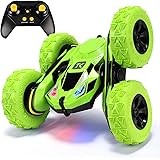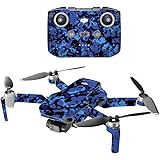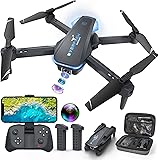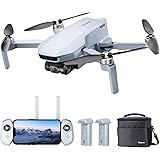Have you ever watched an RC tricopter gracefully take to the sky and wondered how it all comes together? Seeing a homemade model like the one in the video above perform its maiden flight is truly exciting. It’s a testament to ingenuity and the rewarding experience of building something that flies. But what exactly goes into making such a unique multirotor stable and controllable? Let’s delve deeper into the world of tricopters, exploring their distinct characteristics, essential components, and what it takes to get them airborne successfully.
Understanding the RC Tricopter: A Unique Multi-Rotor Design
An RC tricopter stands out in the crowded field of drones and quadcopters due to its distinct three-motor configuration. Unlike a quadcopter, which uses four fixed motors, a tricopter features two fixed motors at the front and a single motor at the rear. This rear motor is mounted on a tilting mechanism, usually controlled by a servo, which allows it to pivot left and right.
This design offers several advantages. For instance, the tilting rear motor provides precise yaw control, giving tricopters a very agile and responsive feel in the air. Many hobbyists appreciate this characteristic, finding it provides a unique flight experience. Additionally, with one less motor and ESC (Electronic Speed Controller) compared to a quadcopter, a tricopter can sometimes be a simpler build, though it introduces the complexity of the servo for yaw authority.
Essential Components for Your Home-Built Tricopter
Building a custom RC tricopter requires careful selection and integration of several key components. Each part plays a critical role in the aircraft’s performance, stability, and control. Understanding these elements is fundamental to a successful build.
The Frame: Foundation of Flight
The frame is the skeleton of your tricopter. It dictates the size, weight distribution, and overall durability. Common materials include carbon fiber for its strength-to-weight ratio, wood for easy prototyping, or aluminum for robustness. A well-designed frame minimizes vibrations, which are crucial for the flight controller’s performance, and provides secure mounting points for all other components.
Propulsion System: Motors and ESCs
Brushless DC motors are the workhorses of any multirotor. They convert electrical energy into thrust. The choice of motor depends on the desired thrust, battery voltage, and propeller size. Electronic Speed Controllers (ESCs) act as intermediaries, translating commands from the flight controller into precise speed adjustments for each motor. ESCs are crucial for smooth and efficient operation, ensuring the motors spin at the exact rates required for stable flight.
The Brain: Flight Controller
Often referred to as the ‘brain,’ the flight controller is arguably the most critical component. This small circuit board contains sensors like gyroscopes and accelerometers (part of the Inertial Measurement Unit, IMU) that constantly monitor the tricopter’s orientation in space. It then processes this data and your stick inputs from the remote control, sending commands to the ESCs to adjust motor speeds. Popular flight controller firmware platforms, such as Betaflight or ArduPilot, offer extensive customization and tuning options.
Controlling Yaw: The Tail Servo
A distinctive feature of the tricopter is its reliance on a servo for yaw control. Unlike quadcopters that achieve yaw by differential thrust from opposite motors, a tricopter tilts its single rear motor. This mechanical solution, powered by a small servo, provides impressive yaw authority and agility. Correct servo selection and precise setup are paramount for stable flight characteristics.
Powering Your Flight: Battery Selection
Lithium Polymer (LiPo) batteries are the standard power source for RC aircraft due to their high energy density. When selecting a LiPo battery for your RC tricopter, consider its voltage (e.g., 3S, 4S), capacity (mAh), and C-rating. The C-rating indicates how quickly the battery can safely discharge power, which is important for supplying sufficient current to the motors during aggressive maneuvers.
Communication: Receiver and Transmitter
The remote control system, comprising a transmitter (your handheld controller) and a receiver (on the tricopter), is your direct link to the aircraft. This system allows you to send commands for throttle, pitch, roll, and yaw. Ensuring a reliable radio link is vital for safe and enjoyable flying. Various protocols and frequency bands are available, each with its own advantages in terms of range and interference resistance.
Preparing for Your Maiden Flight: Essential Checks
The excitement of a maiden flight, as seen in the video, is palpable. However, thorough pre-flight checks are non-negotiable for safety and success. Before you even think about lifting off, you must complete a comprehensive checklist:
- Motor Direction and Propeller Orientation: Verify that each motor spins in the correct direction and that propellers are mounted correctly (clockwise/counter-clockwise for optimal thrust).
- Wiring Integrity: Double-check all electrical connections for loose wires or potential shorts.
- Battery Charge: Ensure your LiPo battery is fully charged and securely mounted.
- Flight Controller Calibration: Perform accelerometer and gyroscope calibrations as per your flight controller’s instructions.
- Radio Range Check: Conduct a range test with your transmitter and receiver to confirm a stable connection.
- Mechanical Integrity: Confirm all screws are tightened, arms are secure, and the servo operates smoothly.
These checks help prevent common issues that can lead to crashes and frustration. A little preparation goes a long way.
Mastering the Controls: Basic Flight Dynamics
Understanding how your RC tricopter responds to your commands is key to successful piloting. The primary flight controls are universal across most multirotors:
- Throttle: Controls the overall thrust, making the tricopter ascend or descend.
- Yaw: Rotates the tricopter around its vertical axis. On a tricopter, this is primarily achieved by tilting the rear motor.
- Pitch: Tilts the nose up or down, making the tricopter move forward or backward.
- Roll: Tilts the tricopter side to side, making it move left or right.
The flight controller interprets your stick movements and adjusts the speed of each motor (and the tilt of the rear motor) in real-time to execute these commands, maintaining stability throughout.
Tuning for Stability: The PID Controller Concept
Achieving stable and responsive flight with your RC tricopter often comes down to proper PID tuning. PID stands for Proportional, Integral, and Derivative – the three components of a control loop used by the flight controller. These values determine how aggressively the flight controller corrects for errors in orientation.
- Proportional (P): Addresses the current error. A higher P value makes the tricopter respond more forcefully to tilt, but too high, and it can cause oscillations.
- Integral (I): Corrects for long-term errors or drift. It helps the tricopter hold its desired position over time.
- Derivative (D): Dampens oscillations and overshoots. A well-tuned D helps the tricopter settle quickly after a movement.
PID tuning can seem daunting, but many flight controller firmwares offer default settings that are a good starting point. Fine-tuning these values, often done iteratively, refines the tricopter’s flight characteristics, making it feel locked in and responsive.
Safety First: Responsible RC Piloting
While the thrill of flying an RC tricopter is immense, safety must always be your top priority. Fly in open areas, away from people, animals, and private property. Always check weather conditions before flying, as wind can significantly impact a lightweight multirotor. Be aware of your surroundings and any potential obstacles. Additionally, proper handling of LiPo batteries, including safe charging and storage practices, is crucial to prevent fire hazards. Responsible piloting ensures a fun and safe hobby for everyone.











